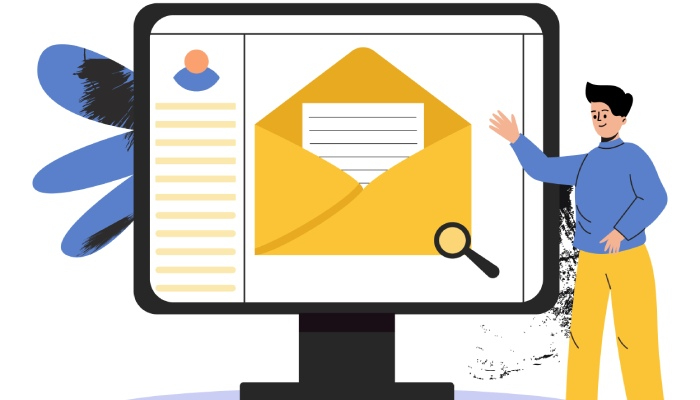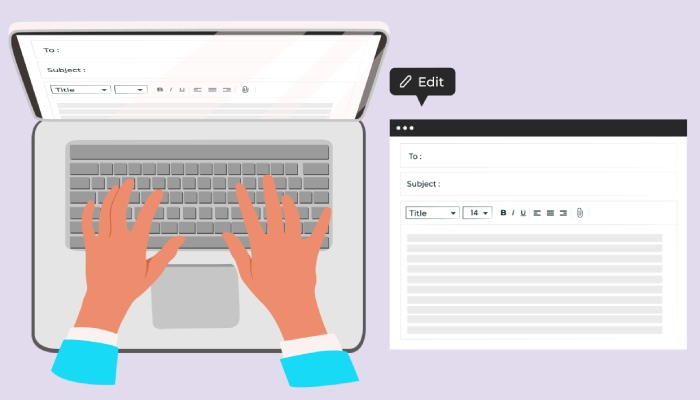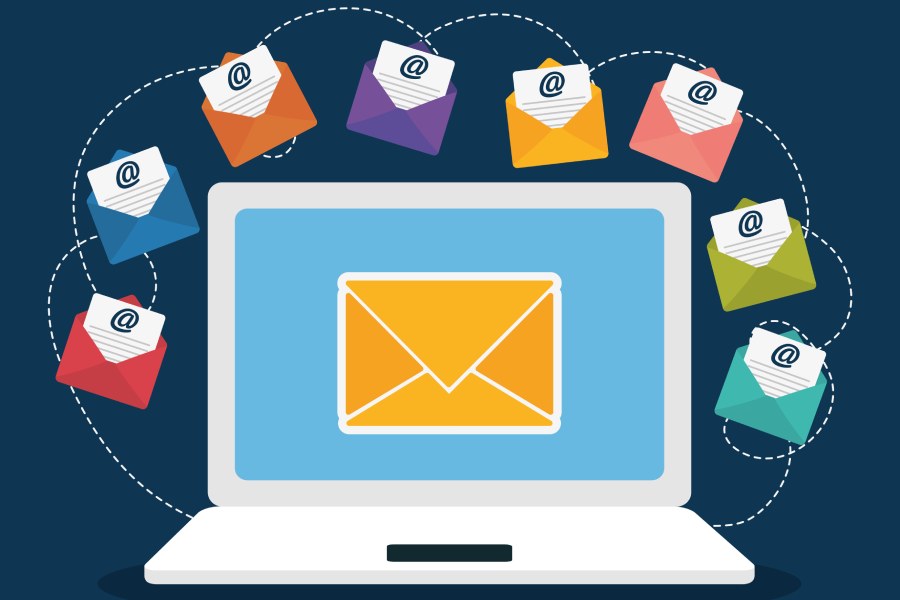Cold Outreach Strategy: Effective Email Tips for Lead Generation
Cold outreach can feel daunting. It’s like walking into a crowded room and trying to strike up a conversation with someone you’ve never met before. The fear of rejection looms large, but what if you knew the secret to making those conversations successful? The key lies in your email approach—how you craft your message and connect with potential leads.
In this article, we’ll explore effective strategies for cold outreach that will not only help you get noticed but also engage your audience in meaningful ways. From researching your targets to sending thoughtful follow-ups, these tips aim to turn those intimidating cold emails into warm conversations. Let’s dive in and unlock the potential of your lead generation efforts!
A successful cold outreach strategy consists of several key components, including personalized messaging that addresses the recipient’s specific pain points, leveraging mutual connections to build trust, and utilizing platforms like LinkedIn for preliminary engagement. Additionally, following up strategically and setting clear expectations are essential to enhance chances of conversion and foster long-term relationships.

Researching Your Target Audience
Thorough research allows you to penetrate the noise and deliver messages that resonate. Understanding your target audience goes beyond mere demographics; it involves their behaviors, preferences, and key pain points.
By looking at factors such as age, occupation, interests, and purchasing habits, you can craft tailored outreach that is relevant and engaging. Tools like LinkedIn Sales Navigator or Crunchbase present a treasure trove of analytics and insights that transform how you view your leads.
Noticing specifics about a lead’s professional background or interests can provide invaluable context when crafting your message.
Using Social Media for Research
When it comes to effective outreach, social media platforms—especially LinkedIn and Twitter—serve as essential resources for gathering insights about your target audience.
Following potential contacts allows you to observe their posts and interactions, providing clarity regarding what they value most. Engage with their content by liking, commenting thoughtfully, or sharing insights that might pique their interest. This not only builds rapport but also establishes your presence as someone who genuinely cares about their needs.
For instance, if a lead frequently shares articles on sustainability in business practices, this could serve as an opening to discuss how your product or service aligns with these values. It shows them that you’re not just another cold email in their inbox but a well-informed partner interested in dialogue rather than a quick sale.
Furthermore, you can analyze the topics they are discussing or sharing within their networks to discern broader industry trends. This can help position you as an insightful adviser—a role more appealing than just a salesperson looking to push an agenda. When your outreach, such as through platforms like Nureply, reflects an understanding of their challenges and aspirations, you’re more likely to elicit positive responses.
Armed with this information, you can tailor your outreach to address specific pain points. The next step is enhancing this approach further by exploring how to create communications that truly connect with leads on a personal level.
Crafting Personalized Emails

Personalization is key to cutting through the noise in a crowded inbox. To achieve that, it’s essential to start with a strong opener that captures attention right away. Instead of a standard greeting, try mentioning a mutual connection or referencing something noteworthy about the recipient. For instance, you might say, “I noticed you recently spoke at the Tech Innovators Conference.” This offers a direct link between you and the recipient, demonstrating that you’ve done your homework.
After catching their interest, it’s crucial to convey how your product or service can genuinely benefit them.
Include Value Proposition
Clearly stating the value proposition is paramount. Articulate how what you’re offering can solve a specific problem they face in their organization. This should not be another boastful claim; back up your statements with data or case studies. For instance, instead of saying, “Our software is the best,” try something like, “Our product helped XYZ Corp increase their lead generation by 50% in just three months.” Specificity grounds your claims in reality and makes them more persuasive.
Once you’ve laid down the groundwork of why they should care about what you’re offering, it’s time to guide them towards taking action.
Ending your email with a clear call to action encourages the recipient to take that next step. Whether you’re suggesting a brief call or inviting them to download an informative whitepaper, make sure it’s easy for them to respond positively. Phrasing matters here too; questions often elicit responses more effectively than statements.
For example, instead of stating, “Let me know if you’re interested,” consider asking, “Would you have 15 minutes to explore how we can enhance your current strategy?” This subtle shift nudges them towards engagement.
In crafting personalized emails, every detail matters—strong openers set the tone, compelling value propositions provide relevance, and engaging calls to action pave the way for further interaction. With these foundational elements in place, we can now pivot our focus toward how to maintain momentum and keep communication flowing effectively going forward.
Strategies for Effective Follow-Up

Persistence is key in cold outreach because the first email often isn’t enough to garner a response. In fact, studies show that follow-up emails can increase response rates significantly—by as much as 21%. Setting clear timelines for your follow-ups is essential; aim to reach out again within a week after your initial contact. However, it’s crucial to be respectful of your recipient’s time, striking a balance between showing enthusiasm and understanding their potential busyness.
Vary Your Follow-Up Methods
To keep your outreach fresh and engaging, don’t rely solely on emails—mixing up your methods can yield better results. Consider utilizing multiple channels such as LinkedIn messages or even phone calls to interact with prospects. This variety not only keeps the conversation dynamic but also helps catch their attention in different ways. Imagine receiving an email followed by a friendly LinkedIn note—it creates a sense of continuity and persistence without being overwhelming.
Always remember to reference your previous communication when you follow up. This practice reminds your recipient of the context and maintains an ongoing thread in your exchanges, building rapport over time. For example, something simple like “I wanted to follow up on the email I sent last week regarding ” can help jog their memory while keeping the conversation on track.
Moreover, timing plays a significant role in determining how effective your follow-ups are. Research indicates that emails sent on Tuesdays have a higher open rate compared to other days, suggesting that this could be an optimal time for sending follow-ups as well.
A Personal Touch
As Alex, a sales executive, points out, “I received a response on my third follow-up attempt, which led to a profitable collaboration.” This highlights the power of persistence—not just in numbers but in maintaining the quality of interactions. By tailoring each message according to prior conversations and demonstrating genuine interest in their needs, you’re not just selling; you’re creating a connection.
Every follow-up is another opportunity to engage meaningfully with your prospects. Whether it’s acknowledging an achievement of theirs on social media or sharing an insightful article related to their industry challenges, such gestures enhance your reputation from merely being a cold caller to becoming someone they recognize as knowledgeable and relatable.
By integrating thoughtful engagement strategies into your outreach efforts, you lay the groundwork for stronger relationships. The next step involves looking at how you can effectively track those outreach initiatives for greater success.
Tools for Tracking Outreach Success

Assessing the effectiveness of your outreach efforts is where the right tools come into play. These tools not only track how well your emails perform but also offer insights to enhance future interactions. Simply put, they arm you with data that can significantly influence your outreach strategy.
- Email Tracking Software: Tools such as HubSpot and Yesware are indispensable in today’s digital communication landscape. They allow you to monitor essential metrics like open rates, click-through rates, and response rates. This information is crucial; if a significant number of recipients are opening your emails but not clicking through, it might indicate that your call-to-action needs reevaluation.
- CRM Systems: Think of customer relationship management systems like Salesforce as the backbone of your outreach strategy. They help manage interactions with potential clients while analyzing them to better understand trends and client preferences. This analysis promotes timely follow-ups and refined messaging tailored to individual client needs, ultimately improving retention and satisfaction.
- Analytics Platforms: Leverage analytics platforms like Google Analytics to dive deeper into the success of your outreach campaigns. Beyond simply tracking email metrics, these platforms can help correlate email performance with website activity, revealing deeper behavioral patterns among leads. For instance, if users engage more after receiving a particular type of content, it suggests a potential avenue worth exploring further.
Engaging with these tools proactively helps you track performance and allows you to pivot when necessary, utilizing dynamic strategies to keep pace with audience expectations.
While selecting the right tools for your specific needs may feel overwhelming at first, investing time in understanding how each platform works will pay dividends in crafting successful outreach campaigns. A user-friendly interface combined with solid support from the tool providers greatly enhances the experience—so be sure to choose tools that align with your goals and ease of use.
Utilizing these insights effectively paves the way for meaningful connections with your target audience. Next, we’ll explore techniques to make your email enticements even more captivating.
Enhancing Your Email Subject Lines

The subject line of any email is much more than just a simple phrase; it acts as a gateway to your content and can determine whether your message is opened or ignored. To truly capture attention in a crowded inbox, consider employing strategies that stimulate curiosity while also establishing urgency. A well-crafted subject line should not only inform the reader but also compel them to click through and explore further.
Use Curiosity and Urgency
When crafting your subject lines, think about how you can evoke curiosity. Phrasing like “Are you maximizing your lead potential?” invites the recipient to reflect on their current methods and wonder if they could be doing better. Similarly, adding urgency with phrases such as “Don’t miss out on this exclusive offer” pushes individuals to act quickly. The psychology behind these tactics is simple: people are inherently curious creatures who respond positively when they feel a time constraint.
Statistics show that emails with personalized subject lines are 26% more likely to be opened. This points to a straightforward yet powerful technique—using the recipient’s name or referencing their company immediately boosts engagement by creating a sense of connection and relevance. Personalization transcends mere formality; it makes recipients feel seen and valued, significantly increasing the likelihood of interaction.
A/B Testing for Optimal Results
As you implement these strategies, don’t forget the importance of evaluating their effectiveness. A/B testing different subject lines can provide clarity on which techniques strike the right chord with your audience. By sending variations of similar emails with differing subject lines—perhaps one focusing on urgency and another on curiosity—you can measure open rates and determine what resonates best with your prospects.
In practice, incorporating numbers in your subject lines yields an additional boost, as emails featuring data-driven insights can increase open rates by up to 36%. Furthermore, asking questions within the subject can organically enhance engagement rate by 10-15%, inviting readers to contemplate before even clicking through.
Putting It All Together
Crafting compelling subject lines is both an art and a science. Strive for smart brevity; keep your lines clear yet impactful, ideally within six to ten words for optimal open rates. Remember, experimentation is key—track the performance of each email closely as you refine your approach, allowing data to guide your adjustments rather than guesswork.
By honing in on curiosity, urgency, personalization, and rigorous testing, you’ll equip yourself with a powerful arsenal of tools necessary for enhancing your email outreach effectiveness—a skill that will undoubtedly serve you well in the long run as you strive to foster meaningful connections through cold outreach strategies.
Equipped with these insights into effective email strategies, let’s now examine ways to analyze and improve your overall approach for even greater impact.
Analyzing and Improving Your Approach

The first step towards refining your cold outreach strategy revolves around collecting data. This isn’t just about numbers; it’s about understanding the story those numbers tell you. Monitor your open rates, response rates, and conversion rates meticulously. By diligently gathering this information, you set a solid foundation for further analysis. For example, if your open rate is consistently low, it might suggest that your subject lines need more punch or that you’re reaching the wrong audience.
Once you’ve gathered enough data, it’s crucial to identify patterns within that information. You may find that specific days yield better results, such as emails sent on Wednesday mornings eliciting far more responses than other times. Or perhaps personalization seems to connect better with your audience. By observing these trends, you can make informed decisions about when to send emails and what content resonates best with your prospects.
After identifying these patterns, it’s time to implement changes and measure impact. Adjustments could include experimenting with new email templates based on successful formats or rethinking the overall messaging approach tailored specifically to each segment of your audience. Remember that even subtle changes can significantly influence engagement metrics. If previously you had a particular phrase that didn’t resonate well, trying an alternative might revitalize interest.
Tracking the changes in performance metrics will provide insight into what works and what doesn’t over time. Regularly measuring metrics such as open rates and conversion rates allows you to see if the adjustments were beneficial. A summary table of these metrics before and after modifications could look like this:
| Metric | Initial Value | Improved Value |
| Open Rate | 15% | 22% |
| Response Rate | 5% | 12% |
| Conversion Rate | 2% | 7% |
Maintaining an ongoing cycle of data collection, pattern identification, and strategic implementation fosters a climate of continuous improvement within your outreach efforts. Embracing this cycle ensures you’re not just sending emails into the void but are dynamically engaging potential customers based on their reactions and preferences.
In conclusion, a methodical approach to analyzing and improving your cold outreach strategy can pave the way for greater success in lead generation. Don’t forget: adapting based on insights is key for long-term effectiveness.



